Ivorian Food Dishes: Basic Overview
Common Ingredients
Common Cooking Methods
Courses
Meals
Key Taste
Eating Etiquette
Meal Presentation
Culinary Festivals
Influence and Fusion
Popular Types of Ivorian Dishes
-
Stews
Stews make up a large proportion of Ivorian main dishes.
Ivorian stews are usually rich, hearty, and heavily seasoned.
These stews are often made with meat, legumes, and vegetables.
Many stews are thickened with African staples, such as groundnuts (peanuts), okra, or African mango seeds.
-
Snacks
Snacks in Côte d’Ivoire include many types of dishes, but fried dishes are the most popular ones.
These dishes can be sweet or savory, depending on the main ingredients.
Fruits and flour are popular ingredients for Ivorian snacks.
Ivorian snacks are also great appetizers and street food dishes.
-
Grilled and Barbecued Dishes
There are many grilled dishes in Côte d’Ivoire, which serve as entrees, snacks, or street food.
These grilled dishes can be made with fruits, meat, poultry, or seafood.
To prepare grilled meat, Ivorians often marinate the ingredients in a blend of various herbs and spices before grilling.
Ivorian dishes are specialties prepared and enjoyed in Côte d’Ivoire (also known as Ivory Coast), a country in West Africa. While these dishes are shaped by indigenous cooking traditions, they are also significantly influenced by French food offerings.
There are many fascinating facts you can learn about this cuisine, such as the features of its traditional food, its global popularity, and its healthy aspects.
After giving you information on those topics, I will offer detailed descriptions of the 15 most famous dishes in Côte d’Ivoire before highlighting the common attributes of Ivorian cuisine and suggesting beverages for accompanying local food.
15 Most Popular Ivorian Dishes with Filters
You’re going to discover 15 wonderful dishes from Côte d’Ivoire, which are ranked from most to least common.
From national and fusion dishes to traditional specialties and street food delights, you will learn about them all. Don’t forget to use the interactive filter to make your experience smoother.
You can filter according to alphabetical sorting, main ingredients, taste, cooking methods, dish types, courses, and global popularity. Alternatively, search the dishes based on traditional, national, street food, and, most popular dishes.
Attiéké
- National
- Traditional
Attiéké is a traditional Ivorian staple dish made from grated and fermented cassava. It is usually available on the market in a precooked form, and locals usually steam it for a few minutes before serving.
Attiéké is known for its grainy, pulp-like texture and slightly sour taste, which pairs well with grilled meats or fish, spicy tomato sauce, or fried plantains. Garba is a well-known Ivorian street food combining attiéké with deep-fried tuna, chopped onions, and chopped tomatoes.
Kedjenou
- Traditional
Kedjenou is a slow-cooked Ivorian stew of chicken and vegetables hailing from the Baoule ethnic group. Its name stems from a local word meaning “to move/ shake.”
Kedjenou is made by sealing the ingredients in a canari (a traditional earthenware pot) and cooking it over a low flame without stirring. There is no need to add extra liquid; the meat should be cooked in its own juice to achieve a tender texture and deep flavor.
Sometimes, locals prepare this Ivorian stew by wrapping the meat and vegetables in banana leaves and cooking them under hot coals. Anyway, rich and hearty kedjenou is a perfect match for attiéké.
Foufou
- Traditional
Foufou, also known as fufu, is a classic staple dish in Côte d’Ivoire and other West African countries. Locals prepare it by boiling starchy foods, like yams or plantains, and pounding them into a dough-like consistency.
With a neutral taste, foufou is a well-liked side dish for savory soups and stews of many kinds. Compared to foufou in other countries, the Ivorian version is slightly sweeter and denser.
Since foufou boasts a smooth and sticky consistency, people enjoy this staple dish by picking up a portion and forming it into a small ball. There is no need for cutlery!
Alloco
- Street Food
Alloco is a beloved Ivorian snack and street food made by frying slices of peeled ripe plantains. It boasts a crispy outside, a soft, tender inside, and a deep sweetness on both sides.
The simplicity, delicious taste, and portability of alloco make it a highly versatile dish. Ivorians love serving it on its own or with grilled fish and boiled eggs.
Maafe
- Traditional
Maafe, alternatively spelled as mafe or domodah, is the Ivorian name for peanut butter stew. This stew originated among the Mandinka and Bambara people of Mali and eventually spread all over West Africa.
This peanut butter stew includes a base of ground peanuts or peanut butter, which is cooked with tomatoes, meat (chicken, beef, or lamb) and various vegetables (such as carrots and sweet potatoes).
Thanks to its rich, creamy texture and nutty flavor, maafe pairs beautifully with rice and bread.
Poisson en Papillote
- Traditional
Poisson en papillote, literally “fish enveloped in paper,” is a fantastic fish dish in Côte d’Ivoire. Introduced by the French, it is now among the most delicious specialty to serve with rice.
As suggested by the name, poisson en papillote involves steaming or baking the fish in parchment paper or foil and cooking it in its own juice with spices, herbs, and additional vegetables.
This process results in moist, flaky fish with wonderfully savory taste and addictive aromas.
Soupe du Pêcheur
- Traditional
Soupe du pêcheur, or fishermans’ soup, is a common dish in Côte d’Ivoire, especially in coastal regions. While it originated in European gastronomy, many Ivorians highly adore it.
Soupe du pêcheur consists of many types of fresh local seafood, such as fish, shrimp, and sometimes other shellfish. All are combined with a tomato-based broth, vegetables, and spices.
The Ivorian version often features palm oil and hot peppers for a local twist. These ingredients give the seafood specialty a striking red color and a stimulating taste of spiciness.
Akpessi
- Traditional
Akpessi is a traditional Ivorian stew-like dish made with African eggplants, plantains, smoked herrings (or other types of fish), and red oil. Another variation called akpessi d’igname has the addition of yams.
Akpessi is a perfect combination of vegetables and fish for breakfast and lunch. With a side of boiled yams or rice, this eggplant-based dish is ideal for people seeking meat-free meals.
Gbofloto
- Street Food
Gbofloto, also known as puff-puff, is a type of deep-fried doughnut popular across Côte d’Ivoire and the rest of West Africa. It is made from a simple dough of flour, sugar, yeast, eggs, and butter.
The crispness of gbofloto will give you a wonderful mouth feel right from the first bite. Make your experience even more memorable by serving this doughnut snack with strawberry or raspberry dip.
Pain Brochette
- Street Food
Pain brochette is a cherished Ivorian sandwich that combines French-style baguettes with local grilled meat on skewers. Often sold as an evening snack, it is a street food favorite available at many eateries and roadside stalls in the country.
Grilled beef is the most popular ingredient for pain brochette, which is made by splitting a baguette length-wise and stuffing it with the grilled meat. Extra ingredients include mayonnaise, eggs, sauces, and vegetables or herbs.
Banane Braisée
- Street Food
Banane braisée, or grilled banana, is a common snack in Côte d’Ivoire. Locals prepare it by grilling ripe plantains over an open flame or charcoal to enhance their natural sweetness with a touch of smoky flavor.
As one of the most inexpensive Ivorian street foods, grilled bananas are hugely popular. These sweet and juicy bites are delicious enough on their own, but locals sometimes enjoy them alongside savory dishes.
Sauce Aubergine
- Traditional
Sauce aubergine is a well-known Ivorian stew made with eggplants. These vegetables are blended with tomatoes, onions, palm oil, meat (optional), and spices.
Sauce aubergine boasts a creamy texture and a rich flavor, plus a distinct red hue coming from palm oil. People usually enjoy it with ivory-white foufou, creating a striking contrast of colors.
Poisson Braisé
- Traditional
Poisson braisé, or grilled fish, is a classic dish in Ivorian cuisine. It is a well-liked entree to serve with attiéké, salads, or spicy sauces.
The preparation of poisson braisé starts with marinating fresh fish in a mixture of lemon juice and spices. After the fish is well infused with savory and aromatic flavors, it is grilled to perfection over charcoal and served hot.
Sauce Kaklou
- Traditional
Sauce kaklou, also known as sauce kplè ba, is a time-honored Ivorian stew hailing from the western region of the country. It is thickened with a sauce based on the edible seeds of the African mango or bush mango (Irvingia gabonensis).
In Côte d’Ivoire, the African mango often goes by the name kaklou or kplè ba, hence the name of the stew. Besides its namesake ingredient, sauce kaklou incorporates a few extra components, such as fish, shrimp, tomatoes, etc.
With its rich and flavorful taste, sauce kaklou goes well with many starchy side dishes, namely foufou and rice.
Choukouya
- Traditional
Choukouya is a well-known Ivorian variation on grilled meat or steak, which goes well with spicy dips, salads, and alloco. It can be prepared with many types of meat, such as chicken, goat, beef, lamb, etc.
Choukouya is distinct from other types of grilled meat in terms of marination, as locals usually season the meat twice. Initially, the seasoning is applied before the meat is grilled, and then a bit of spice is added during the grilling process to enhance the richness of the meat.
I have just given you an overview of the best dishes in Côte d’Ivoire, but the journey isn’t over yet; check out what makes Ivorian cuisine special next!
What Is Special About Ivorian Cuisine?
Among the factors that have resulted in present-day Ivorian cuisine, the three following aspects are the most important ones.
Côte d’Ivoire is home to more than 60 ethnic groups, each with its own culinary traditions. The largest groups include the Akan, the Krou, the Southern Mandé, and the Voltaics.
Together, these groups create the backbone of Ivorian cuisine, which is rooted in the wider West African culinary tradition.
As Côte d’Ivoire is a former French colony, French culinary practices have significantly impacted Ivorian cuisine. This influence is evident in the style of cooking and the presentation of dishes.
Côte d’Ivoire’s geography provides a wealth of natural resources that contribute to its cuisine. The country’s access to the Atlantic Ocean ensures a steady supply of fresh seafood, while the fertile lands support the cultivation of various fruits and vegetables.
In the next section, you will learn about the most beloved beverages in Côte d’Ivoire and ideal pairings with food.
What Are the Best Beverages to Pair With Ivorian Dishes?
The three types of beverages I’m going to show you are ideal options for complementing various Ivorian dishes.
Bissap Juice
Bissap juice, also known as roselle juice or hibiscus tea, is known for its sweet and tart flavor. This infusion goes well with light dishes like attiéké and alloco, though rich dishes like maafe can create a nice flavor contrast.
Fruit Juices
Ivorians enjoy several kinds of fruit juices, especially tamarind juice. These beverages range from sweet to tart and pair beautifully with dishes of many kinds, like foufou, poisson en papillote, and soupe du pêcheur.
Koutoukou
Koutoukou is the local term for palm wine, an alcoholic beverage varying from sweet to sour and pungent. My recommended dishes to pair with it are hearty, flavorful ones like kedjenou, choukouya, and poisson braisé.
Tell me what you think about my Ivorian food suggestions! Leave a comment to let me know your valuable feedback. Don’t forget to share this list of Ivorian dishes with your friends.



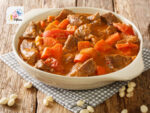
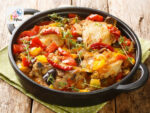
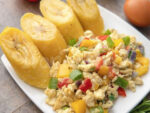
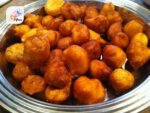

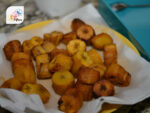
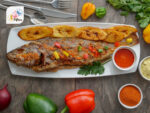
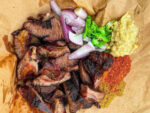
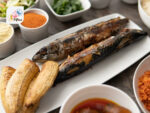
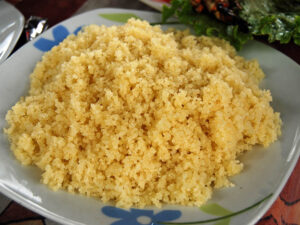
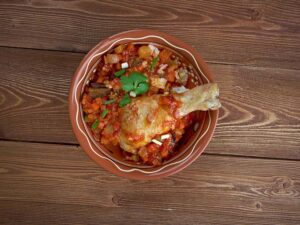
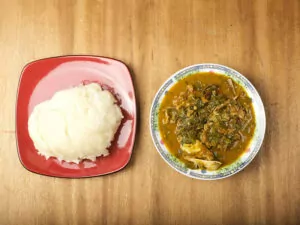
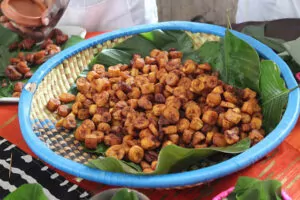
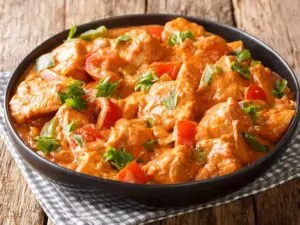
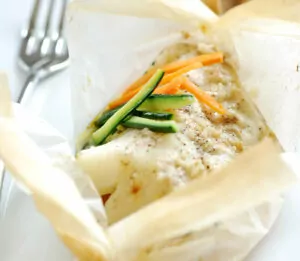
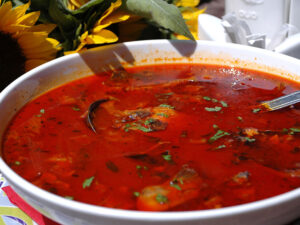
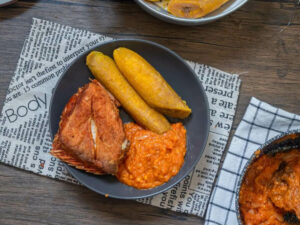
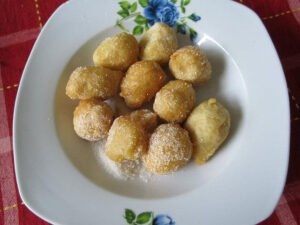
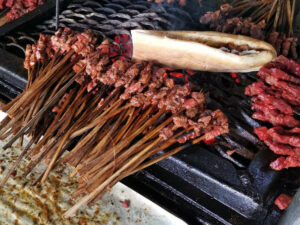
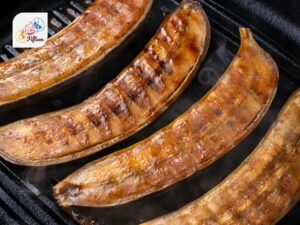
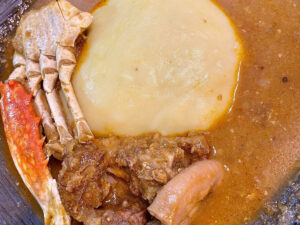
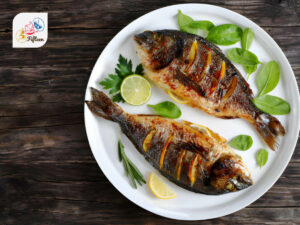
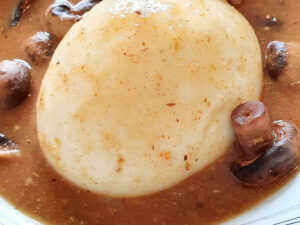
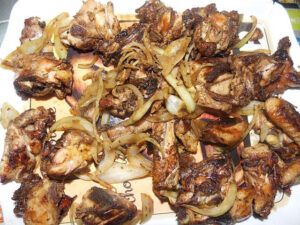
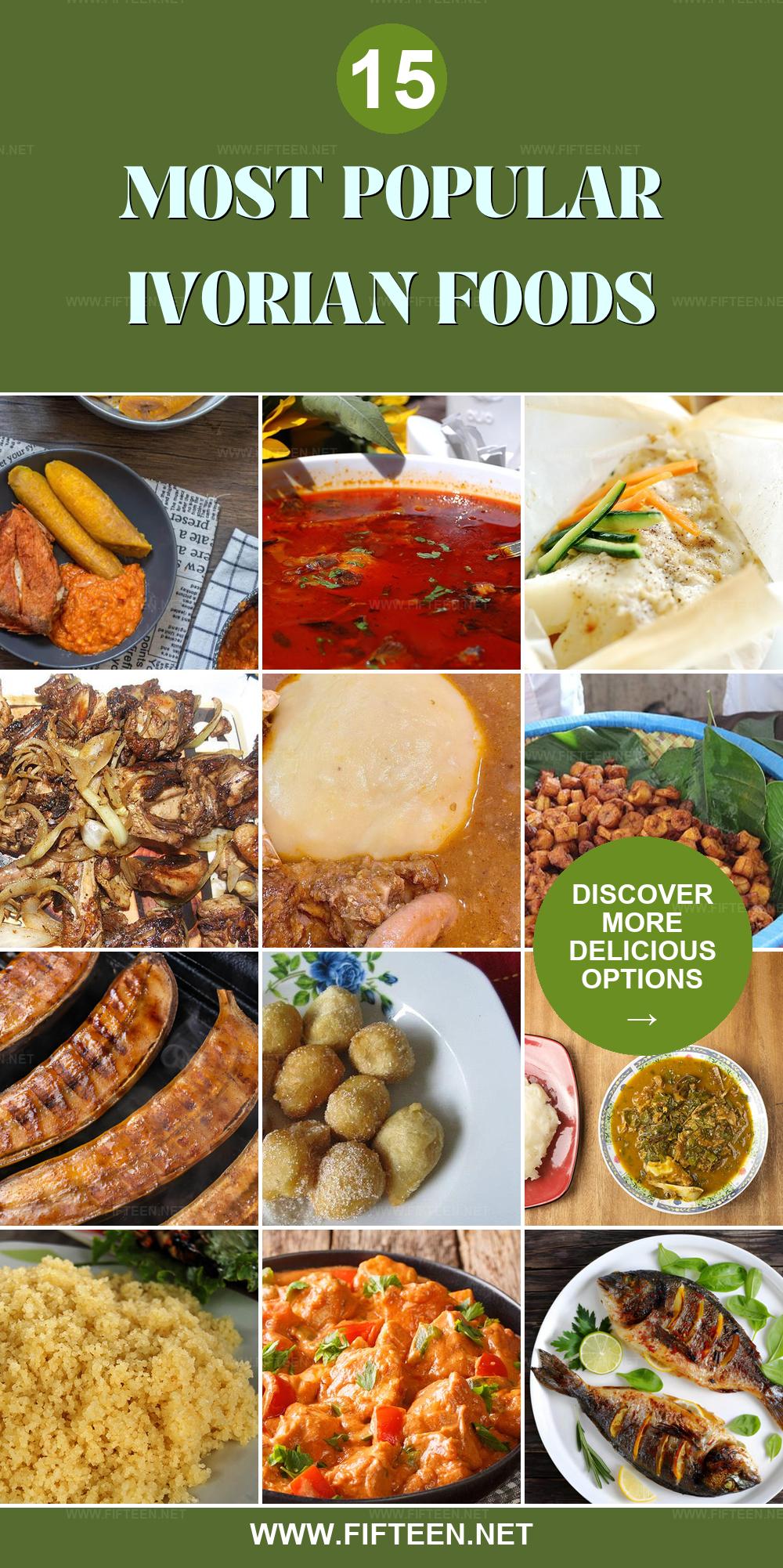
Jamie Scott
Editor in Chief, Senior Content Writer
Expertise
Home Cooking, Meal Planning, Recipe Development, Baking and Pastry, Food Editor, Cooking-video Maker, Western Food Evaluation Expert
Education
Le Cordon Bleu College of Culinary Arts
Local Community College, New York, NY
Jamie Scott is a skilled culinary expert and content creator specializing in Western cuisine. With over 15 years in the culinary field and formal training from Le Cordon Bleu, Paris, Jamie deeply understands how to blend nutrition with delicious flavors. His passion for cooking matches his commitment to making healthy eating accessible and enjoyable.
On Fifteen.net, Jamie brings a fresh perspective to classic dishes and beverages, offering readers insightful recipes, cooking tips, and a fresh view on meal planning that emphasizes taste, health, and simplicity.